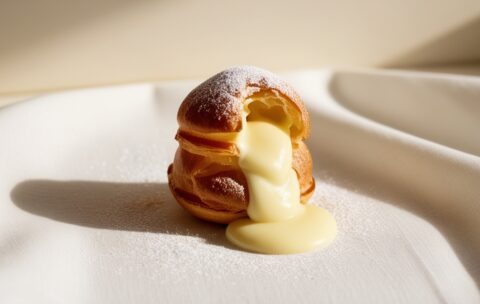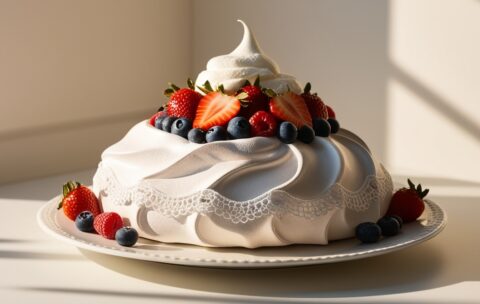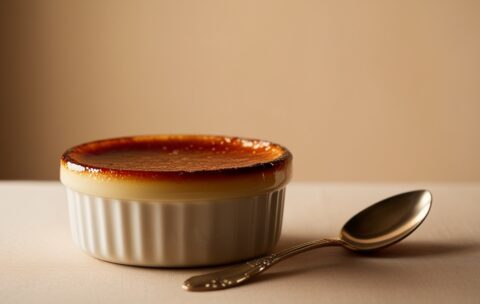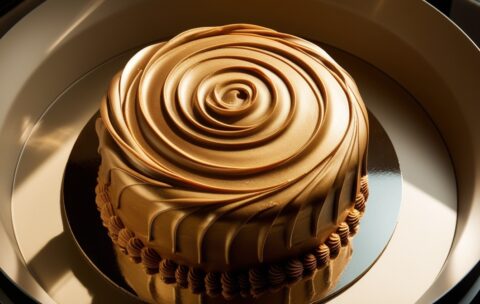Popular Topics
Baking
Vanilla
Passion Fruit
Mascarpone Cream
Pastry Dough
Apple Filling
Flaky Pastries
Specialty Coffee
Tropical Flavors
Dessert Tutorial
Easy Recipe
berry desserts
Pastry Techniques
Cinnamon & Spice
Texture Control
Layered Dessert
Ladyfingers (Savoiardi)
Cake Decorating
Creamy Custards
chocolate desserts
Flambé Desserts
Chocolate Fondant
whipped cream
Tableside Presentation
Edible Gold Dust
Fine Dining at Home
homemade ice cream
Tart Baking
Graham Cracker Crust
Sour Cream Topping
French Dessert
gradient effect
Honey Cake
Berry Jam
Sweet Sauce
Cake Decoration
Chocolate Sauce
mousse techniques
Meringue Dessert
Individual Servings
Fresh Fruit Topping
Baking Techniques
Breakfast & Brunch
Elegant Sweets
frozen layers
Exotic Fruits
Italian cuisine
Dessert
Gelatin-Based Desserts
Tiramisu Technique
Dessert Recipe
Homemade Sweets
Professional Pâtisserie
Orange Sauce
Gourmet Baking
Classic Dessert
Pavlova
Cream Cheese
Popular Instructors
All Dessert Courses
What you'll learn
How to prepare and blind-bake an almond shortcrust pastry.
Techniques for making a silky smooth passion fruit curd without curdling.
Methods to poach or macerate lychee for optimal flavor and texture.
Assembly steps for layering curd and fruit in the tart shell.
Baking times and temperatures to achieve a crisp crust and set filling.
Creating a glossy fruit glaze to finish and preserve freshness.
Garnishing ideas to elevate presentation (edible flowers, zest, or mint).
Italian Tiramisu with Rare Coffee Varieties
Dive into the art of crafting a luxurious Italian Tiramisu …
What you'll learn
Identifying and sourcing rare coffee beans ideal for brewing tiramisu espresso.
Precision brewing methods (espresso and cold brew) to extract optimal flavor without bitterness.
Making smooth mascarpone cream using traditional whisking and folding techniques.
Assembling layers of coffee-soaked ladyfingers and mascarpone for consistent texture.
Balancing sweetness, coffee intensity, and cream thickness for a perfect mouthfeel.
Presentation tips to showcase coffee beans alongside each serving.
Golden Chocolate Fondant
Golden Chocolate Fondant is a luxurious, molten-centered dessert that combines …
What you'll learn
Ingredient Selection & Preparation
How to choose and combine premium dark chocolate, unsalted butter, and the unique ingredient (edible gold dust) to achieve both flavor depth and visual appeal.
Proper techniques for melting and tempering chocolate to ensure smooth consistency.
Batter Creation & Consistency Control
Step-by-step guidance on mixing flour, sugar, eggs, and cocoa to create a velvety batter that bakes into a crisp exterior while preserving a molten core.
Tips for testing batter viscosity to guarantee consistently gooey centers.
Molding & Baking Techniques
Methods for greasing and flouring individual ramekins or molds so the fondants release cleanly.
Precise oven temperature and timing strategies—accounting for oven variances—to achieve the signature “golden” crust with a flowing center.
Golden Finish Application
How to incorporate edible gold dust or gold leaf: when and how to apply it so it adheres beautifully without melting or smearing.
Alternative decoration ideas (e.g., gold-dusted raspberries, gold-tinted sauce) to complement the fondant’s appearance.
Plating & Serving
Techniques for plating fondants to maximize visual impact—pairing with complementary sauces (e.g., raspberry coulis, salted caramel) and garnishes.
Recommendations on optimal serving temperature and timing to preserve the molten center for guests.
What you'll learn
Banana Selection & Ripeness
How to choose bananas at the peak of sweetness and proper firmness for caramelizing.
Recognizing visual and tactile cues that indicate ideal ripeness.
Caramel Sauce Preparation
Techniques for melting and browning sugar without burning—achieving a smooth, amber-hued caramel.
Balancing sweetness and depth by adjusting cook time and adding flavor enhancers like vanilla or citrus.
Cooking & Coating Bananas
Proper slicing methods to ensure even cooking.
Timing the addition of butter and bananas so the fruit softens without turning mushy.
Tips for gently tossing banana slices in hot caramel to create uniform coating.
Serving & Pairing Ideas
Creative ways to plate caramelized bananas as a standalone dessert or as a component (pancakes, waffles, yogurt, ice cream).
Garnish suggestions—nuts, herbs, spice dustings—to add texture and color contrast.
Storage and make-ahead strategies to preserve caramel’s texture and banana integrity.
What you'll learn
How to select the right chocolate type for mousse (dark, milk, or white)
Techniques for achieving light, airy texture without deflating
How to temper chocolate for maximum flavor and smoothness
Tips for folding ingredients like a pro
Creative plating and garnishing ideas (berries, mint, edible flowers)
Storage methods to keep mousse fresh and fluffy
What you'll learn
The fundamentals of making a perfectly smooth, classic Vanilla Panna Cotta with no grainy texture.
How to bloom and incorporate gelatin for optimal set and mouthfeel.
Techniques for infusing cream with aromatics (e.g., vanilla beans, citrus zest, coffee grounds) without overcooking.
Troubleshooting common issues (e.g., weeping, over‐firm Panna Cotta, air bubbles).
Recipe adaptations for dietary preferences (e.g., coconut-based Panna Cotta for a dairy-free alternative, agar-agar substitutions for vegetarian).
Creative topping and garnish ideas: fruit coulis, macerated berries, caramel shards, chocolate curls, and edible flowers.
Elegant plating and serving methods (serving in molds, serving “naked” in jars, layering with compotes).
What you'll learn
How to prepare and bake pâte à choux (choux pastry) to produce perfectly puffed profiterole shells.
The step-by-step process for cooking a smooth, lump-free vanilla custard (crème pâtissière).
Techniques for piping and stuffing profiterole shells without causing them to collapse.
How to make a simple yet luscious chocolate sauce (ganache-style) for drizzling or dipping.
Presentation tips for arranging profiteroles on a platter or creating a classic croquembouche-style tower.
What you'll learn
Meringue Fundamentals (Paragraph + List):
You’ll understand how to whip egg whites to the correct stiffness and fold in sugar without deflating the mixture.
Recognize stages of beaten egg whites (soft peaks → stiff peaks).
Techniques for incorporating sugar gradually.
Identifying when the meringue mixture is ready for baking.
**Shaping & Baking Techniques (Table):
Step Key Tip
Piping vs. Spreading Use a piping bag for defined edges; spread with a spatula for a rustic look.
Forming a Well Create a shallow indentation in the center to hold cream and fruit.
Oven Temperature Start at 120 °C (250 °F) for 15 min, then reduce to 90 °C (200 °F) to dry.
This table highlights how small adjustments in technique and temperature impact the final texture.
Cream & Fruit Assembly (Paragraph):
Learn to prepare stabilized whipped cream so it holds shape, and choose complementary fruits (e.g., kiwi, berries, passion fruit) to balance sweetness and acidity.















